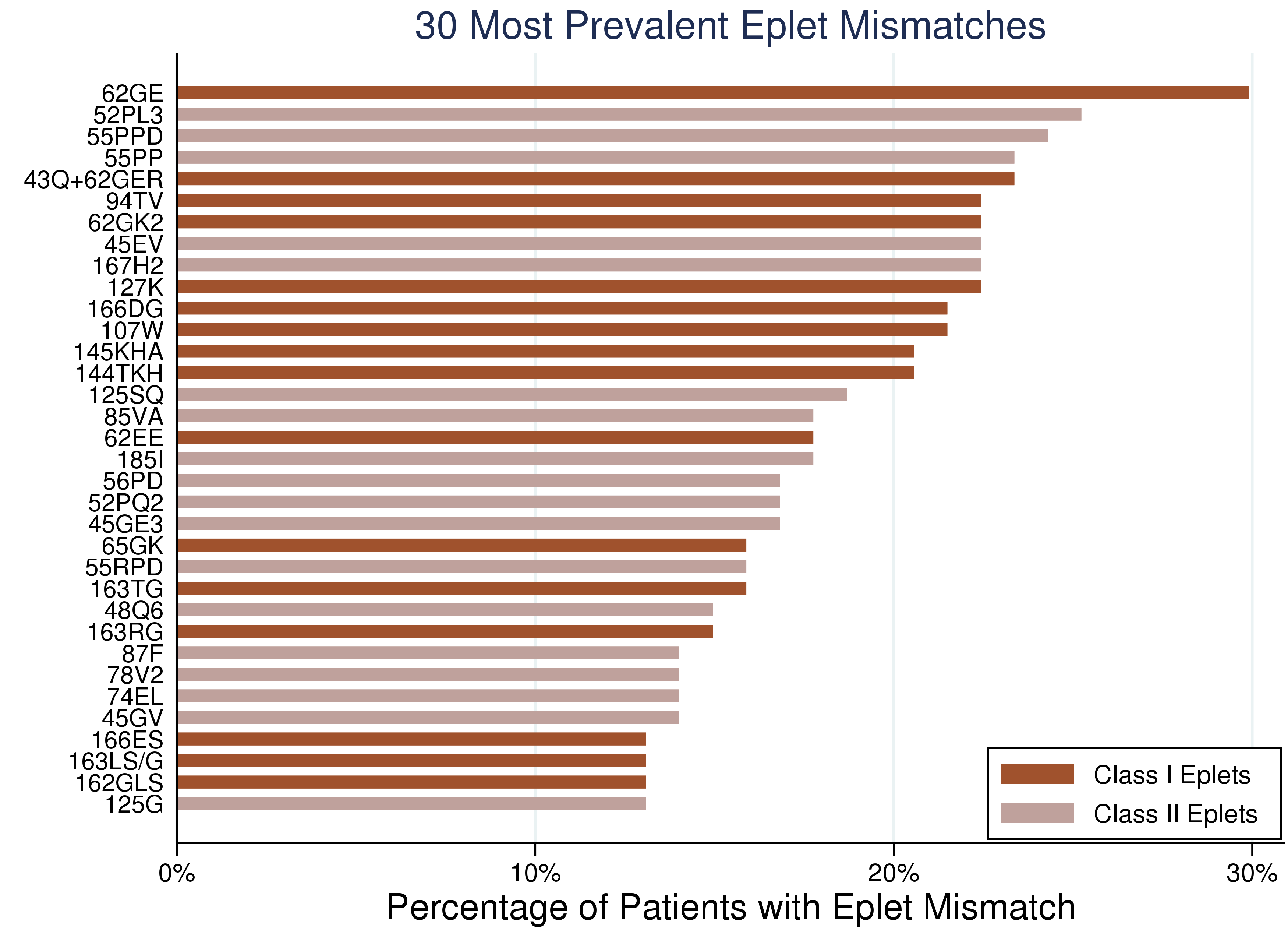Identification of Eplet Mismatches Associated with De Novo Donor Specific HLA Antibody in a Pediatric Kidney Transplant Cohort
Johns Hopkins University, Baltimore, MD
Meeting: 2020 American Transplant Congress
Abstract number: B-055
Keywords: Antibodies, Epitopes, Kidney transplantation, Pediatric
Session Information
Session Name: Poster Session B: Kidney: Pediatrics
Session Type: Poster Session
Date: Saturday, May 30, 2020
Session Time: 3:15pm-4:00pm
 Presentation Time: 3:30pm-4:00pm
Presentation Time: 3:30pm-4:00pm
Location: Virtual
*Purpose: While optimizing immunological matching will decrease the risk of de novo donor specific HLA antibody (dnDSA) formation and improve long-term graft function in pediatric kidney transplant recipients, waiting for an optimally matched organ can drastically increase wait and dialysis time. Avoiding amino acid sequences, within the HLA antigen (eplets) that are most immunogenic, can enable more precise donor selection, minimize formation of dnDSA without significantly increasing recipient wait time. Therefore we suggest an investigation to determine which eplet mismatches are the most pathogenic to inform donor selection.
*Methods: Eplet mismatch analysis was performed between 107 pediatric kidney transplant recipients (2006 – 2018) and their donors who were followed at our transplant center. We performed exploratory analysis to identify the prevalence of each eplet mismatch in our cohort. We analyzed development of dnDSA, and reported the percentage of exposed patients who developed dnDSA against mismatched eplet. MFI > 3000 was considered positive.
*Results: The prevalence of dnDSA in our cohort was 53%. The pediatric ESRD population at our center is very diverse, with an ethnic distribution of 42% Black, 49% Caucasian, 4% Middle-Eastern, 3% Hispanic and 1.5% South Asian. The mean eplet load for Class I and Class II are 40 and 30, respectively. The commonly mismatched Class I eplets were 62GE, 43Q+62GER, and 94TV expressed in A2 antigen, and Class II eplets 52PL3 (DQ4) and 55PPD, 55PP, 45EV (DQ7), Figure 1. The eplets to which the highest proportion of exposed individuals formed antibody was 75S3, 160AE (DQ2) and 23L, 55RL3 (DQ4). The most common Class I antibody target was 138K (C5) and 151AHA (A11), Figure 2.
*Conclusions: In our racially diverse population, we saw a high eplet load along with a high prevalence of dnDSA, however the most commonly exposed eplets differed from the eplets commonly associated with dnDSA. The immunogenicity of eplets is not addressed by load alone and more studies need to be done to ascertain which eplet mismatches constitute at a higher risk for formation of dnDSA. This is the first study that investigates eplet mismatch load in a racially diverse pediatric population.
To cite this abstract in AMA style:
Charnaya O, Jones J, Chiang P, Philogene MC, Garonzik-Wang J. Identification of Eplet Mismatches Associated with De Novo Donor Specific HLA Antibody in a Pediatric Kidney Transplant Cohort [abstract]. Am J Transplant. 2020; 20 (suppl 3). https://atcmeetingabstracts.com/abstract/identification-of-eplet-mismatches-associated-with-de-novo-donor-specific-hla-antibody-in-a-pediatric-kidney-transplant-cohort/. Accessed July 18, 2025.« Back to 2020 American Transplant Congress


